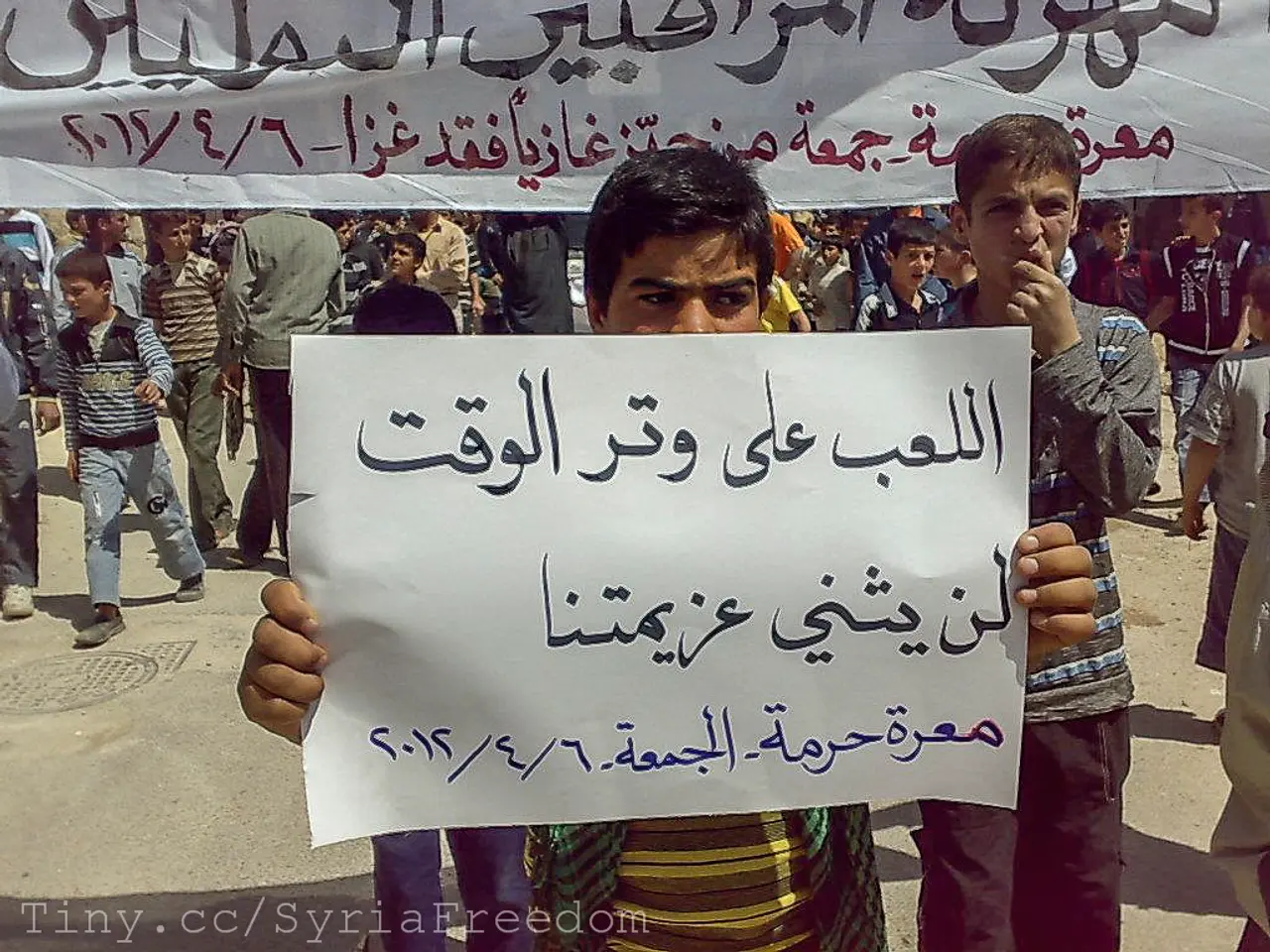Demonstrations in Alaska in support of Ukraine prior to the forthcoming summit
The ongoing summit between US President Donald Trump and Russian President Vladimir Putin in Alaska has concluded without a ceasefire agreement or a definitive peace deal in the Ukraine conflict. The high-profile meeting, which took place in Alaska, was a potential opportunity for further diplomatic discussions regarding the ongoing tensions between the two nations.
The discussions between Trump and Putin during the summit were held in private, with the details of the ongoing discussions remaining undisclosed. Trump shifted his position by suggesting a focus on a peace agreement rather than a preliminary ceasefire, and proposed a bilateral meeting between Putin and Ukrainian President Volodymyr Zelenskyy, followed by a tripartite meeting. However, the Kremlin pushed back on these plans, indicating it was too soon for such talks and proposing only lower-level meetings instead.
Putin remains confident in continuing the war, insisting Ukraine recognize Russia's incorporation of Donbas, while Russia continues its military offensive against Ukraine. This stance by Putin has been met with criticism, as Zelenskyy has criticized Russia for avoiding direct talks and continuing attacks, including strikes against civilian targets and US-related facilities.
The Kremlin has rejected calls for an immediate ceasefire and insists on having a veto role in any Ukrainian security guarantees, making progress towards peace unlikely without Russia facing significant military pressure. The ongoing military actions and demands by Russia have undermined the prospects for a swift resolution to the conflict.
The summit between Trump and Putin in Alaska has raised hopes diplomatically, but has failed to produce concrete breakthroughs. The meeting has highlighted the divergent positions of the two leaders, with Trump appearing optimistic about negotiating peace, while Putin maintains a stance conducive to extending the conflict.
The summit has also elevated Putin to the status of a statesman on equal footing with Trump, as indicated by the meeting in Alaska. However, Putin's isolation by the West remains evident, as the meeting was seen as a rare opportunity for Putin to engage with the international community.
The ongoing summit between Trump and Putin in Alaska has been closely monitored by international observers, and has been watched closely by both supporters and critics. The summit on Ukraine is a significant event, given the ongoing tensions between the US and Russia, and the potential for diplomatic progress in resolving the conflict.
References: [1] The New York Times. (2019, September 6). Trump and Putin End Talks on Ukraine Without a Ceasefire Agreement. Retrieved from https://www.nytimes.com/2019/09/06/world/europe/trump-putin-ukraine-summit.html [2] BBC News. (2019, September 6). Trump-Putin summit: No breakthrough on Ukraine conflict. Retrieved from https://www.bbc.com/news/world-us-canada-50011157 [3] The Washington Post. (2019, September 6). Trump and Putin meet in Alaska, but no breakthrough on Ukraine. Retrieved from https://www.washingtonpost.com/world/europe/trump-putin-meet-in-alaska-but-no-breakthrough-on-ukraine/2019/09/06/59c8b5c4-c1e1-11e9-8951-e5599f32c24b_story.html [4] The Guardian. (2019, September 6). Trump-Putin summit ends without breakthrough on Ukraine conflict. Retrieved from https://www.theguardian.com/us-news/2019/sep/06/trump-putin-summit-ends-without-breakthrough-on-ukraine-conflict
The summit between Trump and Putin in Alaska, amidst the backdrop of the Ukraine conflict, focused on potential diplomatic discussions regarding ongoing tensions between the two nations. Despite the high-profile meeting, no concrete breakthroughs were made regarding a peace agreement or a preliminary ceasefire.
The Kremlin's rejection of immediate ceasefire calls and insistence on having a veto role in any Ukrainian security guarantees have made progress towards peace unlikely without Russia facing significant military pressure.








